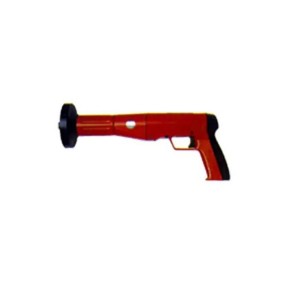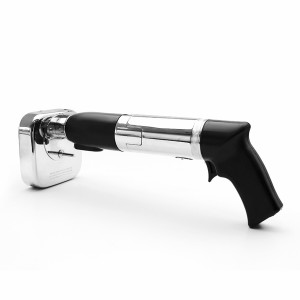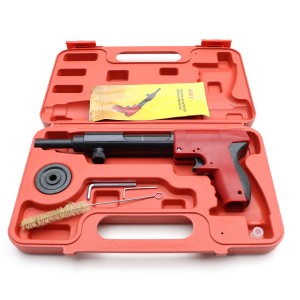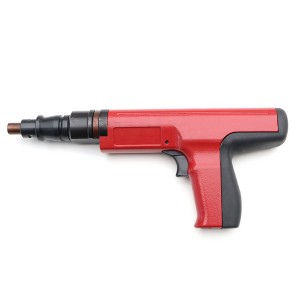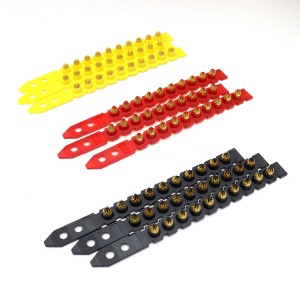The gunpowder powered nail gun is a tool that uses gunpowder as a power source for fixing materials and has been used in construction applications for decades.
The earliest nail guns were mainly used to repair and fix steel mold ingots and furnace materials in steel mills. At this stage, the use scenarios of nail guns were relatively simple and the application scope was small. With the advancement of repair technology, the early nail gun repair technology was gradually eliminated. The nail bullets used in nail guns at this stage were powerful, dangerous, mediocre, and cumbersome to use.
After the early development, nail guns entered the period of direct-action nail guns. As the name implies, direct-action nail guns use gunpowder to directly push nails, thereby completing the connection and fixation of nails to base materials. Its basic principle is similar to that of ordinary firearms. At this stage, the nail bullets used in nail guns have changed from center-fire type to lower-cost edge-fire type. At the same time, the power has been reduced, and the fastening ability is strong, which can fix base materials such as high-strength concrete, rock and thick steel. However, in actual construction, there are not many such application scenarios, and there is often excessive power, resulting in damage to nails and base materials, causing fixation failure. When used on fragile base materials, it is easy to penetrate through the air, and nails fly out to cause safety accidents.
Since this type of nail gun has great power, rock materials are also within its scope of application. However, this type of nail gun has always been unable to solve the problems of single application scenario, excessive power, high risk and few types of nails that can be used in construction, and has gradually been eliminated from the market.
In order to deal with the problem of excessive power of direct-acting nail guns, indirect-acting universal nail guns came into being. The biggest improvement is the addition of an indirect transmission piston between the nail cartridge and the nail, which further reduces the kinetic energy transmitted to the nail. At the same time, the larger mass of the piston can also reduce the speed of nailing, improve safety, reduce the kinetic energy of nails flying out of control, and avoid damage to the nails and the base material.
Next, we will introduce several of the most common indirect-action nail guns used in construction.
The 307 nailer is the most popular nail gun on the market. It is a light single-shot nail gun. Each time it is used, it needs to be loaded with powder loads and nails separately. After firing, the nail tube is pulled forward to complete the shell ejection. It uses S5 series nail bullets and have a specification of 5.6*16mm.
The 603 series is the main force in mass installation projects. As a heavy-duty indirect-action nail gun, it is durable, quiet, and comfortable to hold. By replacing different feeders, you can use two types of nail bullets, S1 and S3, to meet different construction requirements. Except for being heavier than the 307 nail gun, it has almost no other disadvantages, making it the absolute king of domestic engineering nailing construction.
The 301 Powder Actuated Tools is another main model for engineering installation and construction. The main feature of the 301 series is that it uses a ten-round plastic bullet clip to feed bullets, which can fire 10 times continuously, saving construction time and reducing the amount of operation. Among them, the 301T model can be infinitely adjusted through the power adjustment knob on the side to adapt to different construction environments.
However, the 301 series also has some disadvantages. The plastic spring clips used are disposable, which increases the construction cost; and only S1 type nail bullets can be used, which may be less powerful in some construction scenarios.
Post time: Jul-01-2025


